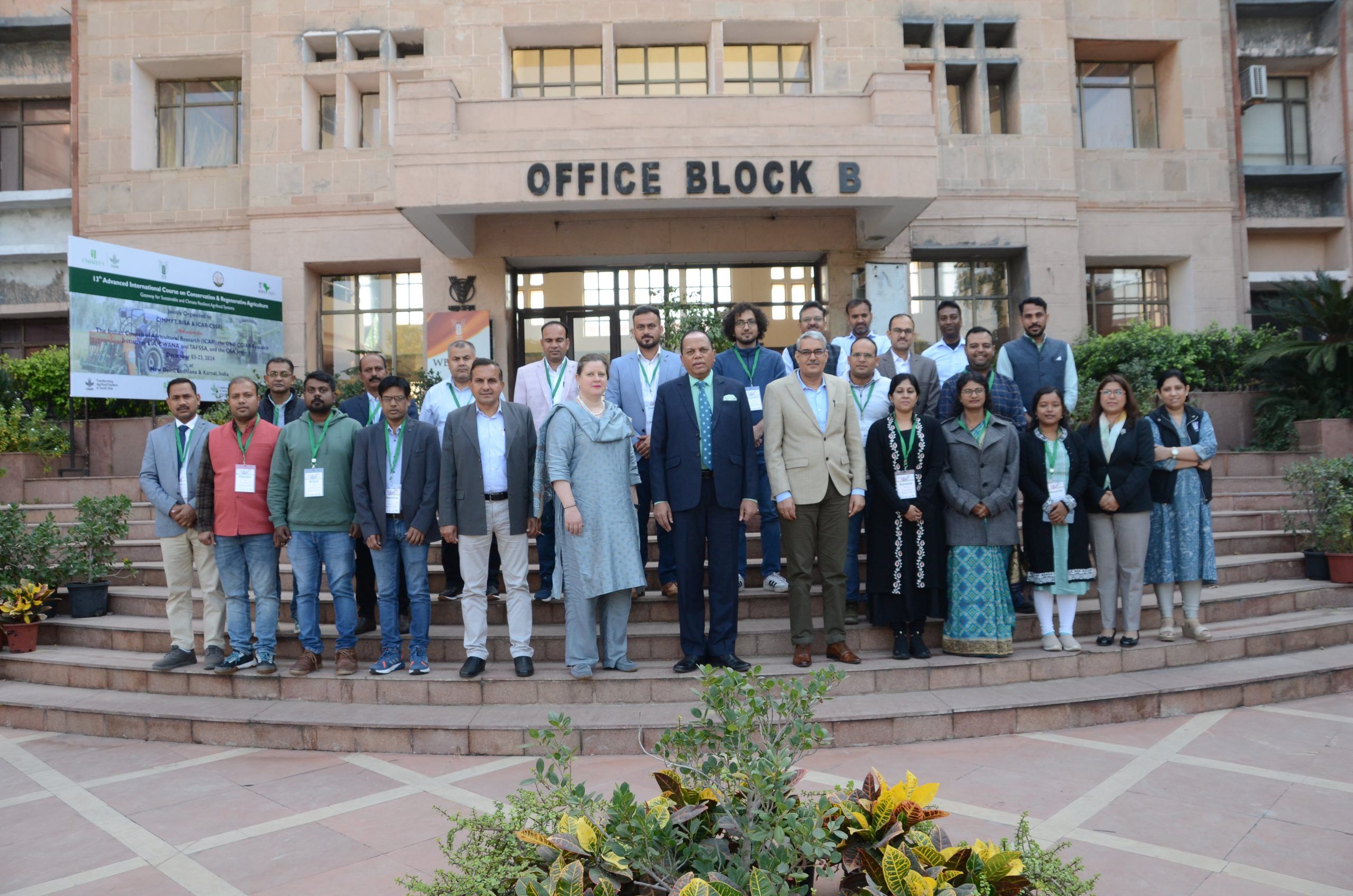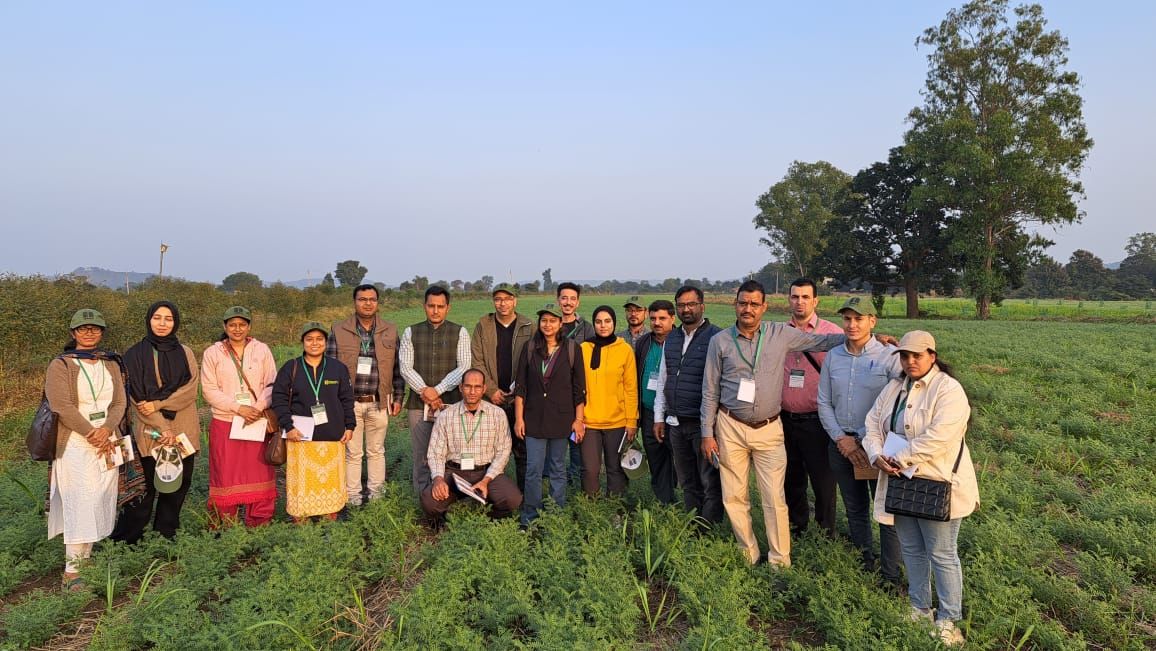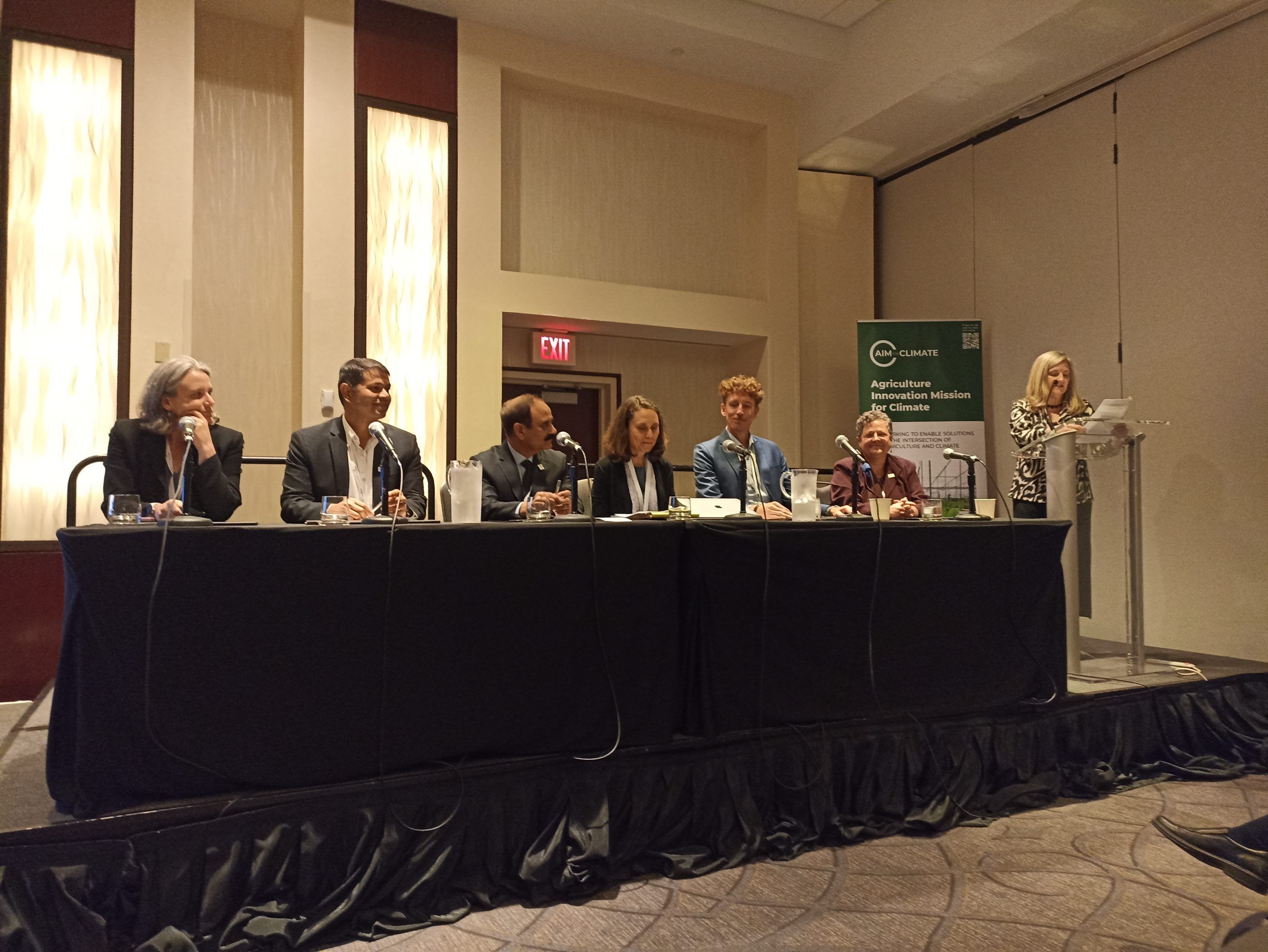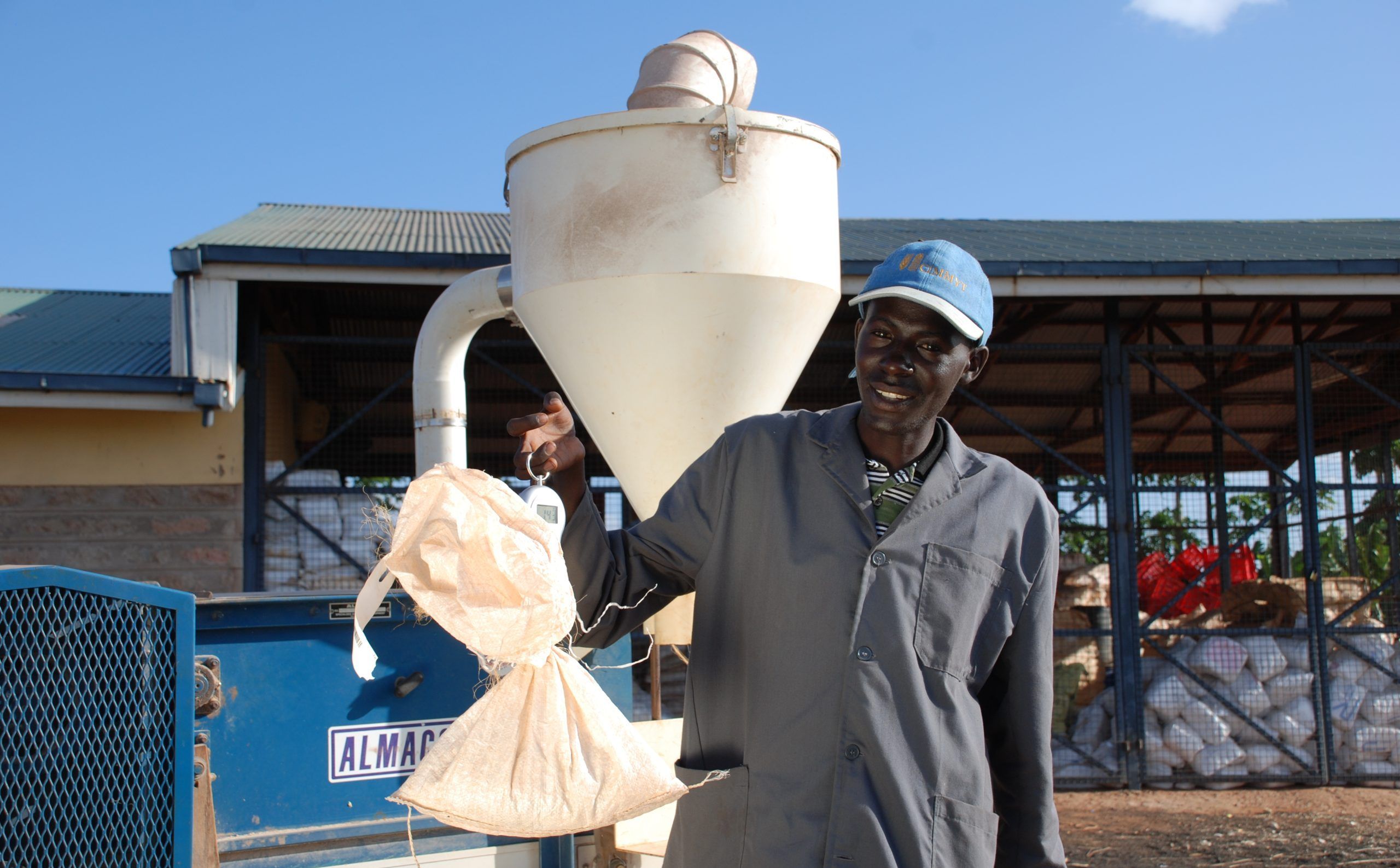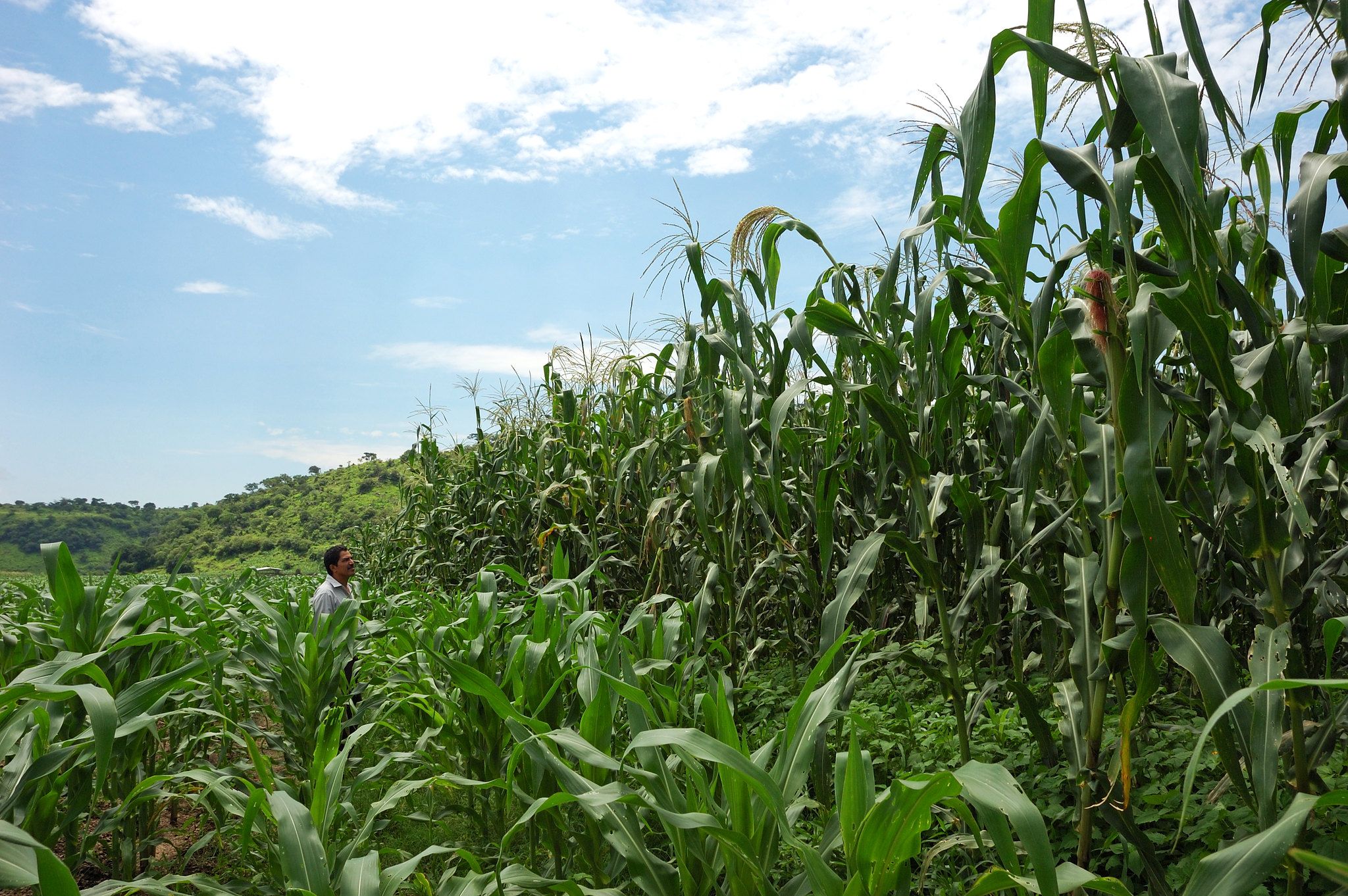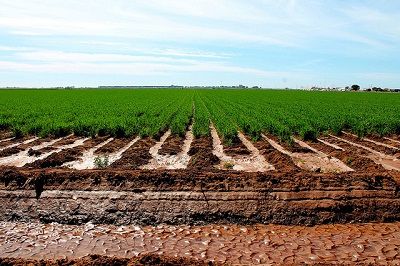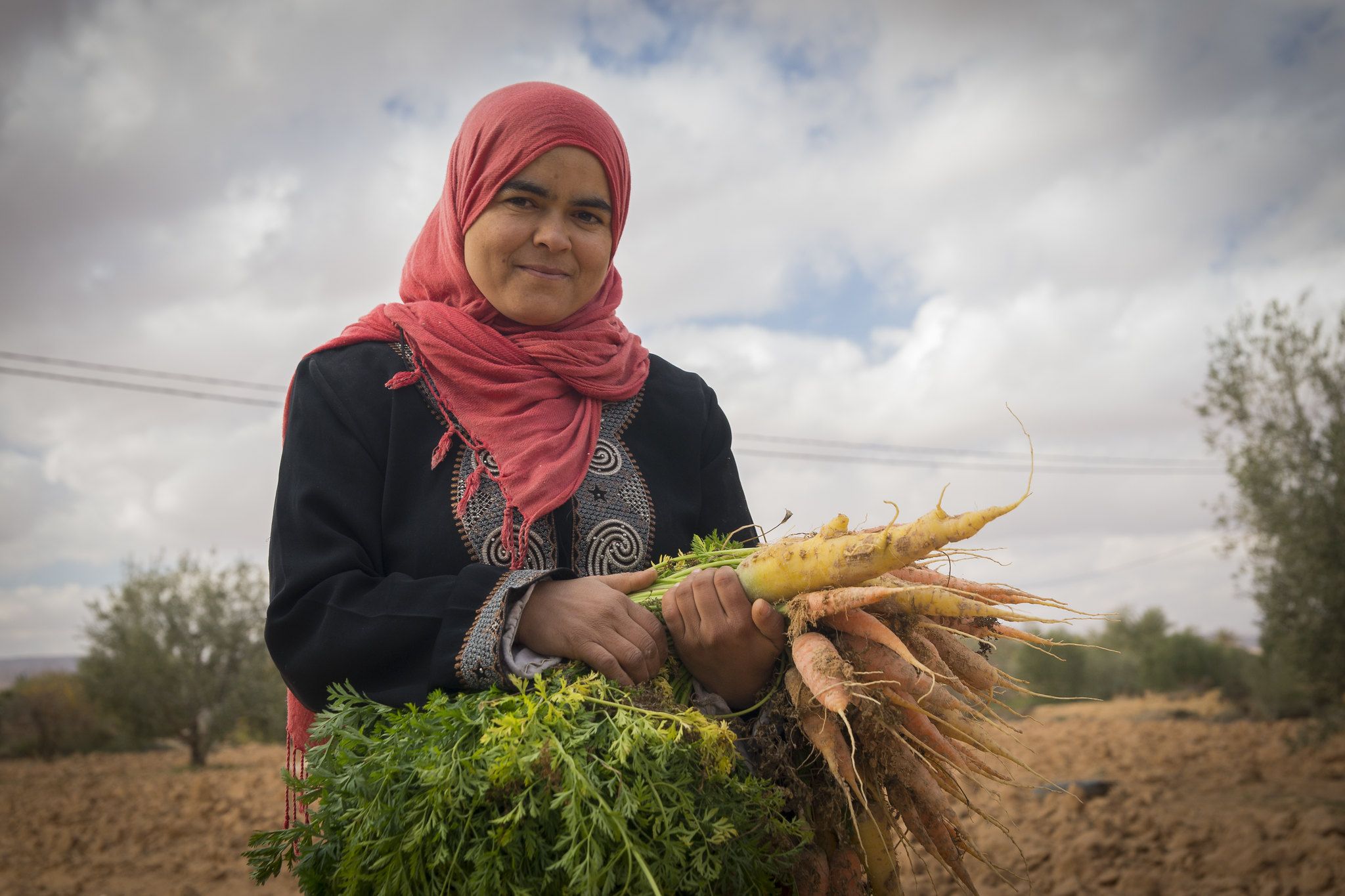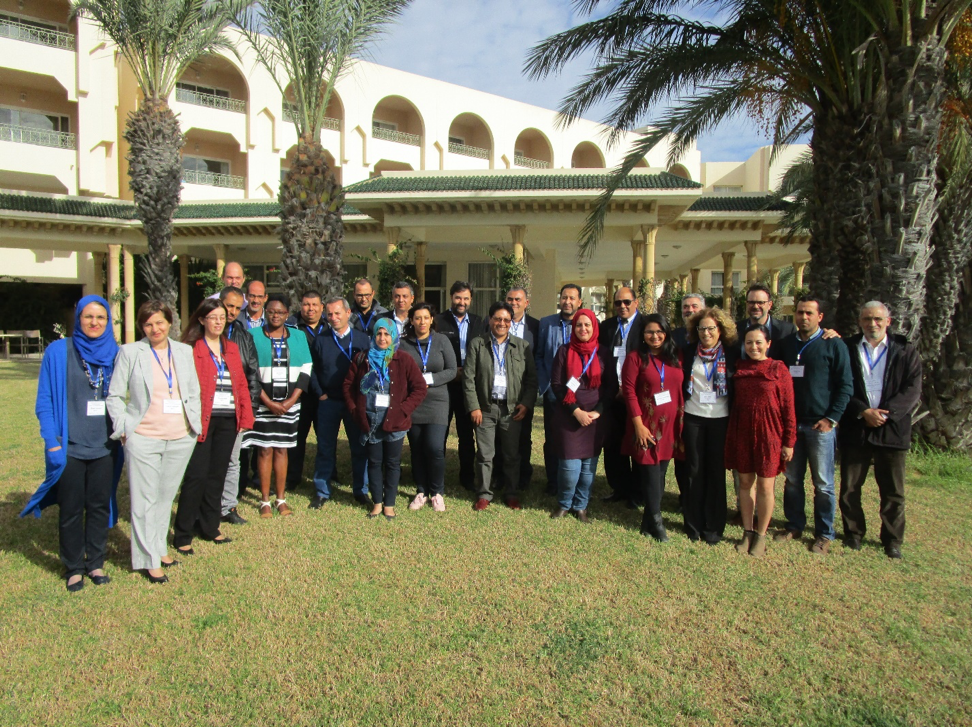Location: Morocco
Advanced Training in Conservation Agriculture: Fostering Sustainable Agronomic Systems

CIMMYT, the Borlaug Institute for South Asia (BISA), and the Indian Council of Agricultural Research (ICAR) jointly organized a three-week training course on conservation agriculture (CA) and regenerative agriculture (RA). The program focused on the potential of sustainable farming methods as vital tools for managing risks in agrifood systems in both irrigated and rainfed areas.
Held from December 3–23, 2024, the training brought together farmers, scientists, and stakeholders to explore innovative solutions to agrifood challenges. Sessions were held at the ICAR Indian Institute of Maize Research and BISA in Ludhiana, Punjab; the ICAR-Central Soil Salinity Research Institute in Karnal, Haryana; and the ICAR-Indian Institute of Farming Systems Research in Meerut, Uttar Pradesh, India.
Building Resilient Agrifood Systems
Conservation agriculture (CA) and regenerative agriculture (RA) are approaches to land management that prioritize ecosystem health. These practices are based on three core principles: minimal soil disturbance, continuous soil cover, and crop diversification. Together, they improve yields, restore natural resources, reduce farming costs, and develop resilient agricultural systems that protect the environment, enhance climate resilience, and improve rural livelihoods, particularly in the Global South.
In South Asia, where rural communities rely heavily on natural resources, farmers face significant challenges, including loss of soil fertility, water scarcity, pollution, and the effects of climate change. These pressures are straining agricultural systems, particularly in irrigated and dryland farming areas.
Despite the clear benefits of CA, adoption remains limited due to barriers such as lack of knowledge on how to implement CA in different agro-ecologies, limited access to appropriate tools, insufficient policy support, and low awareness of the long-term benefits of CA. To address these challenges, training and capacity development are essential for scaling up CA technologies among smallholder farmers and ensuring their long-term impact.
The Advanced Course on CA/RA in Asia was launched in 2010 by CIMMYT in partnership with the Indian Council of Agricultural Research (ICAR) to address the challenges of sustainable agriculture. Since its inception, advanced training workshops have been held annually, and this is the 13th edition.
The training bridges cutting-edge scientific research and multidisciplinary strategies, equipping participants with skills in sustainable intensification, diversification of production systems, resilience-building, and natural resource conservation. To date, CA training has benefited more than 220 researchers, policymakers, and development practitioners from 20 countries.
The 13th edition, held in India, welcomed mid-career researchers from Uzbekistan, Morocco, and India. The course was coordinated by Mahesh Gathala, Cropping Systems Agronomist, and Alison Laing, Agroecology Specialist, both from CIMMYT; Madhu Choudhary, Senior Scientist at ICAR-CSSRI; and Raj Kumar Jat, Senior Scientist at BISA.
Key Highlights of the Advanced Conservation Agriculture Training Course
The Advanced Conservation Agriculture (CA) course was inaugurated on December 4, 2024, at the NASC Complex in New Delhi. The inaugural address was delivered by S.K. Chaudhari, Deputy Director General for Natural Resource Management at ICAR, who highlighted the importance of CA in addressing climate challenges and managing agronomic risks. Chaudhari emphasized CIMMYT’s leadership in promoting CA in India and reflected on the impact of the program, saying, “I have been watching this course for many years. Many young scientists have benefited from this course.” He also fondly recalled the inaugural training session held 13 years ago and extended his best wishes to all the participants. Watch his complete statement here.

During the course, participants explored a wide range of topics related to conservation agriculture (CA) and regenerative agriculture (RA) in different agro-ecologies. Key areas of focus included the role of emerging technologies such as drones, carbon credits, soil fertility, nutrient management, crop modeling, and soil testing in informing policy. Experts from various scientific disciplines provided valuable insights into cutting-edge research for both irrigated and dryland systems.
At BISA’s research station in Ludhiana, participants gained practical experience through hands-on training sessions conducted under the expert guidance of H.S. Sidhu and Manpreet Singh (both from Punjab Agricultural University), with the support of Pardeep Sangwal (BISA).

The training included field visits to ICAR-CSSRI in Karnal, where Director R.K. Yadav, Madhu Choudhary, and Kailash Prajapat presented the Institute’s long-term conservation agriculture (CA) experiments. They also conducted hands-on demonstrations on soil biology and its role in generating evidence for policy decisions.
In addition, Mahesh Gathala conducted hands-on training in basic soil physical and chemical analysis techniques at joint ICAR-CIMMYT field plots in Karnal.
Special visits were organized to innovative agricultural machinery manufacturers, including Landforce and National Agroindustry, where participants observed advanced manufacturing techniques and explored the latest agricultural equipment.
Participants also interacted with the manufacturers’ association at the 5th India International Agri Expo in Ludhiana, gaining insights into emerging trends in agricultural machinery.

In addition, a village visit outside Karnal gave participants the opportunity to interact with farmers practicing conservation agriculture (CA). Farmers shared their experiences, giving participants a first-hand look at the practical benefits and real-world impact of CA on farming communities.

The success of the program underscores the importance of continued collaboration and training in advancing sustainable agricultural practices. By equipping participants with practical skills, cutting-edge knowledge, and opportunities to connect with peers across regions, the training was instrumental in advancing conservation agriculture (CA) and regenerative agriculture (RA).
Participants left the program with enhanced technical expertise, greater confidence in applying CA practices, and valuable insights into emerging areas such as carbon credit schemes and innovative agricultural technologies. These results underscore the critical role of capacity development in strengthening food security, building climate resilience, and promoting sustainable development in the Global South.
Advancing conservation agriculture
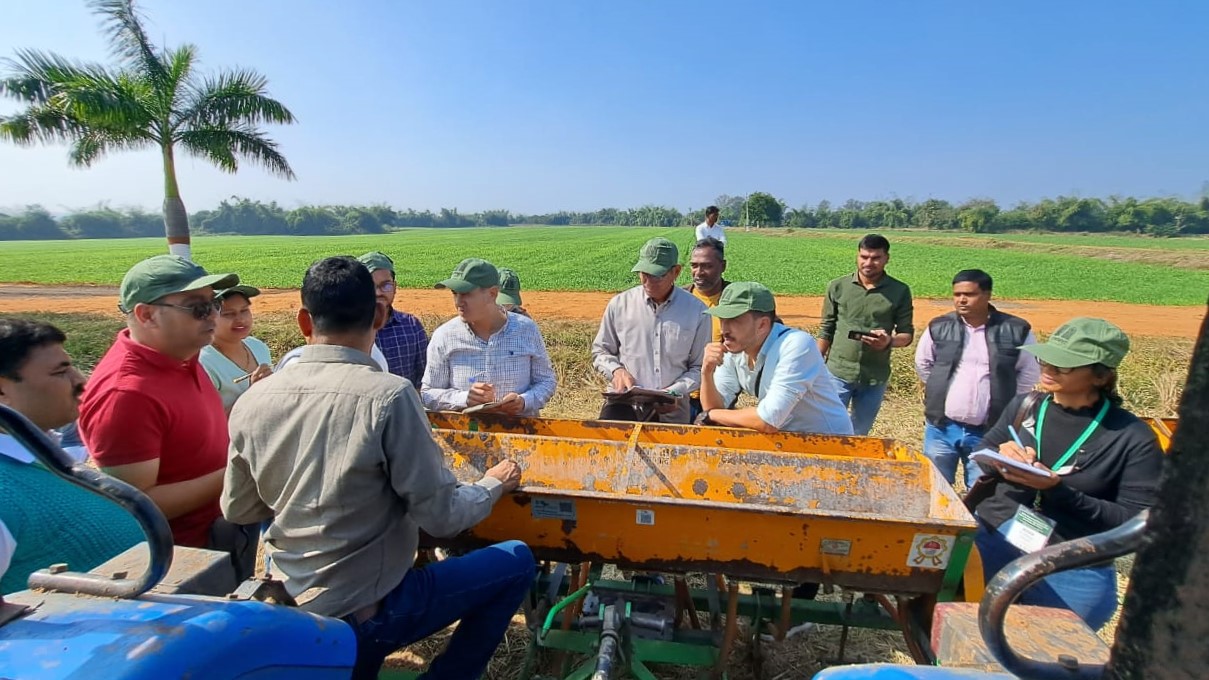
Agriculture feeds the world. Yet traditional cycles of ploughing, planting, and harvesting crop and biomass products is inefficient of labor and other scarce resources and depletes soil health while emitting greenhouse gases that contribute to climate change.
One effort to ameliorate the negative effects of farming is a set of practices referred to as conservation agriculture (CA), based on the principles of minimal mechanical soil disturbance, permanent soil cover with plant material, and crop diversification.
To deliver advanced, high-level instruction on current innovative science around important aspects of cropping and farming system management to scientists from India, Bangladesh, Egypt, and Morocco, the 12th Advanced Conservation Agriculture Course hosted by the Indian Council of Agricultural Research (ICAR), CIMMYT, and the Borlaug Institute for South Asia (BISA) took place in India from December 10 to 24, 2023.
SK Chaudhari, deputy director general for Natural Resource Management, ICAR; HS Jat, director of the Indian Council of Agricultural Research-Indian Institute of Maize Research (ICAR-IIMR); Arun Joshi, country representative for India and BISA managing director, CIMMYT-India; Mahesh K. Gathala, senior systems agronomist and science lead, CIMMYT-Bangladesh; and Alison Laing, agroecologist, CIMMYT-Bangladesh, all attended the opening ceremony at the National Agricultural Science Complex in New Delhi, India.
This CA course integrated scientific advancements and multidisciplinary techniques to sustainably develop agricultural systems, restore natural resources, and improve climate resilience in agriculture throughout Asia and North Africa. It was held at leading research centers throughout India.
SK Chaudhari welcomed delegates to the course and stressed its practical character and efficacy in promoting CA management innovations, as evidenced by the significant achievements and international reputations of many former attendees and resource personnel.
“As climatic variability and change increase, the need to manage agronomic risks grows, and CA is an effective tool for farmers and scientists in both irrigated and rainfed systems,” said Chaudhari.
Twenty rising scientists from such fields as agronomy, soil science, plant protection, agricultural engineering, plant breeding, and extension, took part in the workshop where they gained a better understanding of all aspects of conservation agricultural methods in rainfed and irrigated ecosystems, as well as exposure to wide networks with prominent international scientists. Organizers prioritized the inclusion of female scientists, who made up 40% of attendees.
The workshop empowered participants to act as conservation agriculture ambassadors and champions of modern, novel agronomic methods when they return to their home institutions.
Rajbir Singh, ICAR assistant director general for Natural Resource Management, and ML Jat, global research program director of Resilient Farm and Food Systems, International Crops Research Institute for the Semi-Arid Tropics (ICRISAT) provided keynote addresses at the closing ceremony, held at the ICAR-Central Soil Salinity Research Institute in Karnal, Haryana, India.
CIMMYT at the AIM for Climate Summit
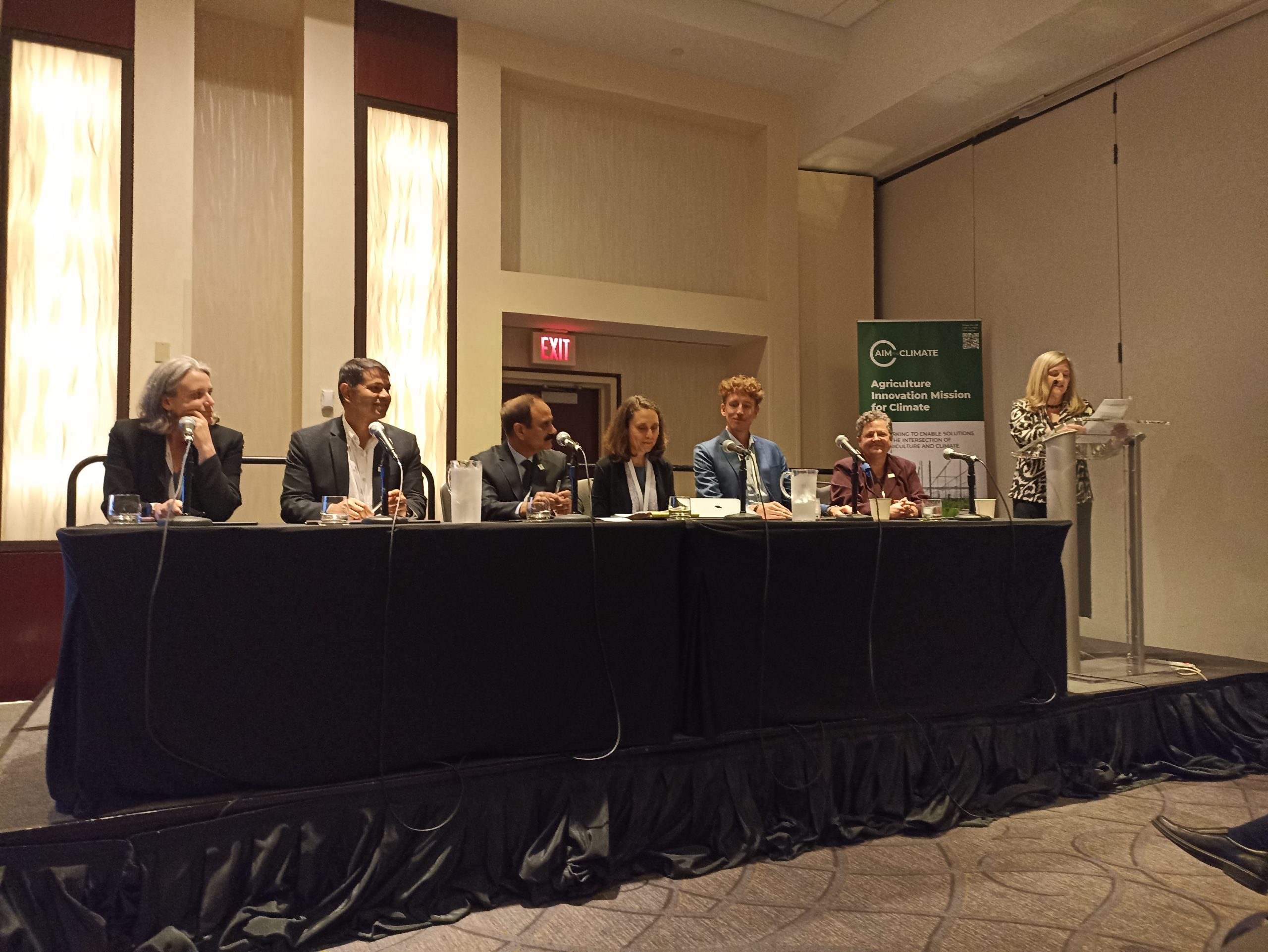
As climate change threats accelerate, new technologies, products, and approaches are required for smallholder farmers to mitigate and adapt to current and future threats. Targeting smallholder farmers will benefit not only the farmers but the entire agri-food system through enhanced locally relevant knowledge that harnesses handheld sensors and advisories on management options, soil status, weather, and market information.
The Agriculture Innovation Mission for Climate (AIM for Climate / AIM4C) seeks to address climate change and global hunger by uniting participants to significantly increase investment in, and other support for, climate-smart agriculture and food systems innovation over five years (2021–2025).
The International Maize and Wheat Improvement Center (CIMMYT), as a partner of AIM for Climate, organized a breakout session titled “Smart Smallholder Fertilizer Management to Address Food Security, Climate Change, and Planetary Boundaries” during the AIM for Climate Summit in Washington DC, May 8-10, 2023.
Fertilizers are essential for increasing crop yields and ensuring food security, yet fertilizer use for food and fodder is severely skewed at the global level, leading to over-fertilization in some regions and under-fertilization in others.
Farmers in low-income countries are highly vulnerable to fertilizer supply shortages and price spikes, which have direct consequences for food prices and hunger. Improving fertilizer efficiency and integrated organic and inorganic sources is important globally as nutrient loss to the environment from inappropriate input use drives greenhouse gas emissions and pollution.
Innovation Sprint
Because smallholder farmers are the primary managers of land and water, the CIMMYT-led AIM4C Innovation Sprint, Climate-Resilient soil fertility management by smallholders in Africa, Asia, and Latin America is designed to implement and scale-up a range of climate robust nutrient management strategies in 12 countries, and to reach tens of millions of smallholder farmers in close collaboration with nearly 100 public-private partners organizations.

Strategies include innovations in extension where digital tools enable farmer-centered private and public advisories to increase the uptake of locally adapted nutrient management practices. Connecting farmers to investors and markets provides financial support for improved nutrient management.
By tailoring validated fertility management practices to their specific conditions, and integrated use of legumes and manure, smallholders will optimize productivity, enhance climate resilience, and mitigate greenhouse gas emissions. Research from other organizations has determined that improved fertilizer management can increase global crop yield by 30% while reducing greenhouse gas emissions.
Right place, right time
“We need locally adapted fertilizer management approaches that work for smallholder farmers. By tailoring validated fertility management practices to their specific conditions, smallholders will optimize productivity, enhance climate resilience, and mitigate greenhouse gas emissions,” said Sieg Snapp, CIMMYT’s Sustainable Agricultural Systems Program Director. She continued, “What is needed now is major investment in data synthesis. Through this SPRINT we are exploring options to enable taking sensors to scale, to reach tens of millions of farmers with hyper-local soils information.”
Inequality is the core of the problem in fertilizer management: some regions apply more than the required amount, where in other regions fertilizer application is insufficient for plant needs, leading to low yields and soil degradation.

“Fertilizer efficiency can be improved through application of the right amount of fertilizer using the right source employing the right methods of application at the right time of plant demand,” said Tek Sapkota, CIMMYT Senior Scientist, Agricultural System/Climate Change.
The session included presentations by the Foundation for Food & Agriculture Research (FFAR), UN Foundation, Pakistan Agricultural Research Council (PARC), Stockholm International Water Institute (SIWI), USDA, and Alliance of CIAT-Bioversity. Highlights sustainable and climate-smart practices in Pakistan, novel plant genetics for improved nitrogen cycling, and soil water and nutrient management in the Zambezi to tackle food security and climate change challenges.
CIMMYT leads innovation sprint to deliver results to farmers rapidly
Smallholder farmers, the backbone of food systems around the world, are already facing negative impacts because of climate change. Time to adapt climate mitigation strategies is not a luxury they have. With that in mind, the Agriculture Innovation Mission for Climate (AIM4C) facilitates innovation sprints designed to leverage existing development activities to create a series of innovations in an expedited timeframe.
At the UN COP27 in Egypt, AIM4C announced its newest round of innovation sprints, including one led by the International Center for Maize and Wheat Improvement (CIMMYT) to enable smallholder farmers to achieve efficient and effective nitrogen fertilizer management. From 2022 to 2025, this sprint will steer US $90 million towards empowering small-scale producers in Africa (Kenya, Malawi, Morocco, Tanzania, and Zimbabwe), Asia (China, India, Laos and Pakistan), and Latin America (Guatemala and Mexico).
“When we talk to farmers, they tell us they want validated farming practices tailored to their specific conditions to achieve greater productivity and increase their climate resilience,” said Sieg Snapp, CIMMYT Sustainable Agrifood Systems (SAS) program director who is coordinating the sprint. “This sprint will help deliver those things rapidly by focusing on bolstering organic carbon in soil and lowering nitrous oxide emissions.”
Nitrogen in China
Working with the Chinese Academy of Agricultural Sciences (CAAS), the sprint will facilitate the development of improved versions of green manure crops, which are grown specifically for building and maintaining soil fertility and structures which are incorporated back into the soil, either directly, or after removal and composting. Green manure can significantly reduce the use of nitrogen-based fertilizers, which prime climate culprits.
“There are already green manure systems in place in China,” said Weidong Cao from CAAS, “but our efforts will integrate all the work being done to establish a framework for developing new green manure crops aid in their deployment across China.”
Triple wins in Kenya
The Kenya Climate Smart Climate Project, active since 2017, is increasing agricultural productivity and building resilience to climate change risks in the targeted smallholder farming and pastoral communities. The innovation sprint will help rapidly achieve three wins in technology development and dissemination, cutting-edge innovations, and developing sets of management practices all designed to increase productive, adaption of climate smart tech and methods, and reduce greenhouse gas (GHG) emissions.
Agricultural innovations in Pakistan
The Agricultural Innovation Program (AIP), a multi-disciplinary and multi-sectoral project funded by USAID, led by CIMMYT, and active in Pakistan since 2015, fosters the emergence of a dynamic, responsive, and competitive system of science and innovation that is ‘owned’ by Pakistan and catalyzes equitable growth in agricultural production, productivity, and value.
“From its beginning, AIP has been dedicated to building partnerships with local organizations and, smallholder farmers throughout Pakistan, which is very much in line with the objectives and goal as envisioned by Pakistan Vision 2025 and the Vision for Agriculture 2030, as Pakistan is a priority country for CIMMYT. However, a concerted effort is required from various players representing public and private sectors,” said Thakur Prasad Tiwari, senior scientist at CIMMYT. “Using that existing framework to deliver rapid climate smart innovations, the innovation sprint is well-situated to react to the needs of Pakistani farmers. “
Policies and partnerships for innovations in soil fertility management in Nepal
The Nepal Seed and Fertilizer (NSAF) project, funded by USAID and implemented by CIMMYT, facilitates sustainable increases in Nepal’s national crop productivity, farmer income, and household-level food and nutrition security. NSAF promotes the use of improved seeds and integrated soil fertility management technologies along with effective extension, including the use of digital and information and communications technologies. The project facilitated the National Soil Science Research Centre (NSSRC) to develop new domain specific fertilizer recommendations for rice, maize, and wheat to replace the 40 years old blanket recommendations.
Under NSAFs leadership, the Ministry of Agriculture and Livestock Development (MOALD) launched Asia’s first digital soil map and has coordinated governmental efforts to collect and analyze soil data to update the soil map and provide soil health cards to Nepal’s farmers. The project provides training to over 2000 farmers per year to apply ISFM principles and provides evidence to the MOALD to initiate a balanced soil fertility management program in Nepal and to revise the national fertilizer subsidy policy to promote balanced fertilizers. The project will also build efficient soil fertility management systems that significantly increase crop productivity and the marketing and distribution of climate smart and alternative fertilizer products and application methods.
Public-private partnerships accelerate access to innovations in South Asia
The Cereal Systems Initiative for South Asia (CSISA), established in 2009, has reached more than 8 million farmers by conducting applied research and bridging public and private sector divides in the context of rural ‘innovation hubs’ in Bangladesh, India, and Nepal. CSISA’s work has enabled farmers to adopt resource-conserving and climate-resilient technologies and improve their access to market information and enterprise development.
“Farmers in South Asia have become familiar with the value addition that participating in applied research can bring to innovations in their production systems,” said Timothy Krupnik, CIMMYT systems agronomist and senior scientist. “Moreover, CSISA’s work to address gaps between national and extension policies and practices as they pertain to integrated soil fertility management in the context of intensive cropping systems in South Asia has helped to accelerate farmers’ access to productivity-enhancing innovations.”
CSISA also emphasizes support for women farmers by improving their access and exposure to improved technological innovations, knowledge, and entrepreneurial skills.
Sustainable agriculture in Zambia
The Sustainable Intensification of Smallholder Farming systems in Zambia (SIFAZ) is a research project jointly implemented by the UN Food and Agriculture Organization (FAO), Zambia’s Ministry of Agriculture and CIMMYT designed to facilitate scaling-up of sustainable and climate smart crop production and land management practices within the three agro-ecological zones of Zambia. “The Innovation Sprint can take advantage of existing SIFAZ partnerships, especially with Zambia’s Ministry of Agriculture,” said Christian Thierfelder, CIMMYT scientist. “Already having governmental buy-in will enable quick development and dissemination of new sustainable intensification practices to increase productivity and profitability, enhance human and social benefits while reducing negative impacts on the environment.”
Cover photo: Paul Musembi Katiku, a field worker based in Kiboko, Kenya, weighs maize cobs harvested from a low nitrogen trial. (Florence Sipalla/CIMMYT)
CGIAR Initiative: Excellence in Agronomy
Smallholdings represent over 80% of the world’s farms, mostly located in the Global South, and supply 50% of global food. Enhanced agronomy management has a great potential to increase productivity, sustainability, efficiency and competitiveness of these smallholdings, which is characterized by low and variable yields and profitability, smallholder farming challenges include water scarcity, climate change, low resource use efficiencies and declining soil health. These result in negative impacts on food and nutrition security, equitable livelihoods and ecosystem health.
Smallholder farmers seasonally make critical agronomic decisions regarding crop choice, planting dates and pest, disease, weed, soil fertility and water management, often based on suboptimal practices and information. Traditional agronomic research enhances our understanding of basic processes, but with limited connection to stakeholder demand and often based on outdated approaches. The development, deployment and uptake of interventions is hampered by social, economic and institutional constraints, further confounded by adherence to conventional supply-driven innovation strategies.
Objective
This Initiative aims to deliver an increase in productivity and quality per unit of input (agronomic gain) for millions of smallholder farming households in prioritized farming systems by 2030, with an emphasis on women and young farmers, showing a measurable impact on food and nutrition security, income, resource use, soil health, climate resilience and climate change mitigation.
Activities
This objective will be achieved through:
- Facilitating the delivery of agronomy-at-scale solutions, including development and technical/user-experience validation and the co-creation and deployment of gender- and youth-responsive solutions to smallholder farmers via scaling partners.
- Enabling the creation of value from big data and advanced analytics through the assembly and governance of data and tools; application of existing analytics and solutions for specific use cases; supply of information on climate impacts, inclusivity and sustainability of agronomic solutions; and national agricultural research system capacity strengthening.
- Driving the next generation of agronomy-at-scale innovations by addressing key knowledge gaps and facilitating innovation in agronomy research through engagement with partners.
- Nurturing internal efficiencies for an agile and demand-driven agronomy research and development community through internal organization and external partnerships for prioritization, demand mapping and foresight.
CIMMYT trains next generation of scientists to tackle soil-borne pathogens
Two new students have graduated from the International Maize and Wheat Improvement Center’s (CIMMYT’s) Soil-Borne Pathogens program. The two new graduates, Khawla Mehalaine and Salah-Eddine Laasli, were supervised by CIMMYT senior scientist Abdelfattah Dababat.
He leads the Soil-Borne Pathogens program, which focuses on identifying the main soil-borne pathogens associated with cereals and developing an integrated pest management approach to combat them. The research team is particularly interested in finding novel sources of resistance against these pathogens.
Over the last two decades, CIMMYT scientists leading the Soil-Borne Pathogens program have trained tens of students which constitute the next generation of top researchers on this topic. Through this program, CIMMYT has also organized workshops and courses in North Africa, including a symposium on cereal nematodes held in Agadir, Morocco, in 2017.
Since soil-borne pathogens are exacerbated by water stress conditions, researchers have identified the Central and West Asia and North Africa regions as priority areas, due to their vulnerability to drought.
On March 1, 2021, Syngenta, in collaboration with CIMMYT and other partners, led the first One Earth Soil and Root Health Forum, an event which examined the importance of root and soil health to food security, climate resilience and livelihoods. The event also created a community for action on root and soil health.

Nematodes in Algeria
Mehalaine holds an engineering degree in agronomy and a master’s degree in plant protection from the Higher National School of Agronomy (ENSA) in Algeria. She successfully defended her PhD dissertation “Studies of cereal cyst nematodes of the genus Heterodera in the regions of northern Algeria” in June 2021, graduating from ENSA with honors.
She studied the behavior of four durum wheat varieties against cereal cyst nematodes through field surveys, molecular identification at species levels, and by evaluating the yield components of these wheat varieties.
She was promoted by ENSA professor Hammach M. and supervised by Dababat from CIMMYT, and professors Mustafa Imren and Göksel Özer from Abant Izzet Baysal University in Turkey.
“Completing my doctorate was a truly enriching experience and a challenging but rewarding journey,” Mehalaine said. “It was a collective effort and I am extremely grateful to Dr Abdelfattah Dababat for sharing his scientific skills, for his patience and support, and for all the opportunities I was given to further my research. Thanks to him, I got to know the world of nematodes. Special thanks to CIMMYT for funding the molecular study part.”

Root-lesion nematode and crown rot fungi
Laasli graduated with an International Master of Agronomic and Environmental Nematology (IMANEMA) from Ghent University, in collaboration with CIMMYT, the National Institute of Agricultural Research in Morocco and the Faculty of Agriculture at Abant Izzet Baysal University in Turkey.
His master thesis, entitled “Interaction of Root-Lesion Nematode (Pratylenchus thornei) and Crown Rot fungi (Fusarium culmorum) associated with wheat resistance under simulated field conditions,” was promoted by Wim Bert, a professor at the University of Ghent, and Dababat. The project was also supervised by Imren and Özer.
Laasli evaluated the host status of 150 spring wheat lines to both P. thornei and F. culmorum, and estimated the damage caused by the disease complex involving both pathogens at different infection scenarios. He found several lines that possessed multiple resistance to both diseases tested — which could be powerful sources of resistance for breeding program worldwide.
Cover photo: Irrigated wheat field. (Photo: S. Sukumaran/CIMMYT)
Four ways of strengthening gender equality in the agricultural sector in the MENA region
When it comes to labor markets, the Middle East and North Africa (MENA) is one of the most gender unequal regions in the world. The male labor force participation rate in MENA is no different from other regions, at around 75%, but female labor force participation rates have remained stubbornly low, at around 20% .
Agriculture is the largest employer of women in the MENA region and the female share of the agricultural workforce increased from 30% in 1980 to almost 45% in 2010, exceeding 60% in Jordan, Libya, Syria and the occupied Palestinian Territory. However, women in the region still face significant challenges accessing land and benefitting from technologies and decent, equitable working conditions.
In the fall of 2019, a group of experts, including London School of Economics and Political Science (LSE) professor of Gender and Development Naila Kabeer, came together to discuss the persistent limited access to labor market opportunities for women in South Asia and MENA, despite an increase in women’s education and access to fertility planning. The workshop organized by LSE discussed barriers, opportunities and policy challenges.
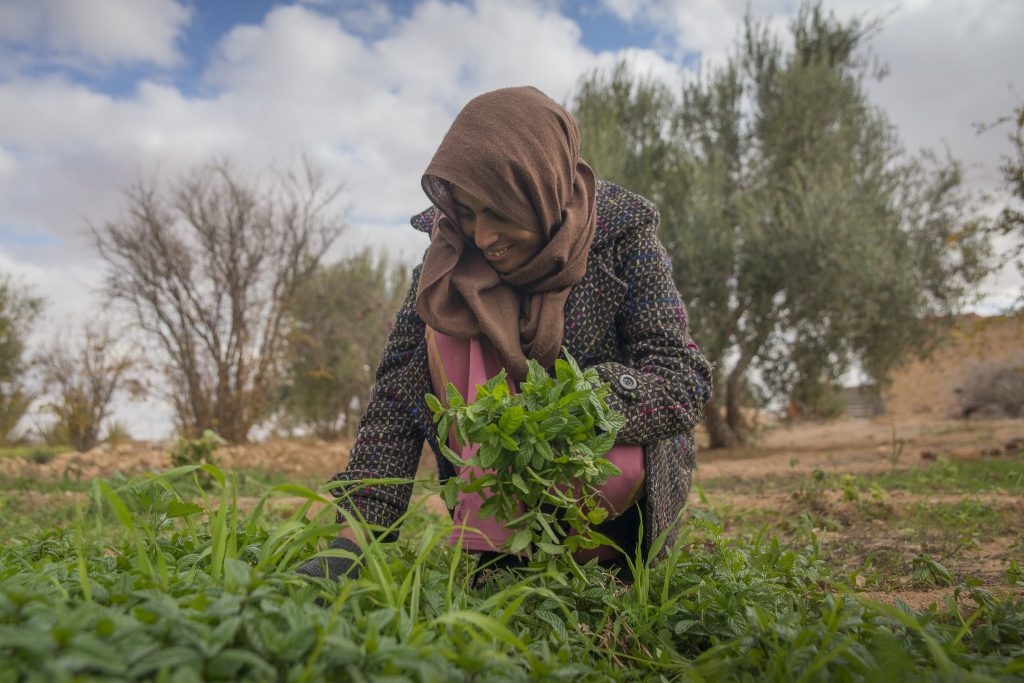
We share some of the expert panel’s key recommendations for the MENA region, which featured research funded by the CGIAR Research Program on Wheat.
1. Recognize women as workers not helpers
According to the World Bank, agriculture employs 36% of women and 22% of men in Egypt. However, research shows that women who work in agriculture are widely categorized as “helpers” to male workers rather than workers in their own right. What’s more, women are listed as “housewives” on their national ID cards, while men are listed as “agricultural workers.” As a result, these women are unable to even access opportunities to bargain for better wages and working conditions.
Legally and socially recognizing these women as workers is a first step to introducing equal pay legislation for men and women in agriculture. It would also justify their inclusion in agricultural extension services and strengthen social protection measures.
2. Change perceptions of property ownership
The MENA region has the lowest level of women’s landownership in the world, at just 5%. Our research findings indicate completely different perceptions of ownership among women and men.
Research in Egypt shows that women tend to identify land officially owned solely by themselves as belonging to themselves and their husbands. Men, on the other hand, are less likely to consider their wives as co-owners, identifying male relatives instead.
In the New Lands — lands irrigated after the building of the High Aswan Dam in Egypt — there are land distribution quotas to encourage more land ownership among women. This has enabled some women to gain significant economic, social and political power. Despite this, these women still prefer to bequeath their land to their sons rather than their daughters due to social pressure and the expectation that their sons will provide for them in their old age.
To mitigate these low levels of women’s land ownership, policy change on its own is not enough. Changing perceptions of land and property ownership needs to go hand in hand with changes at a policy level.
3. Enforce legislation for equal pay and zero tolerance for sexual harassment
In Morocco, female employment in agriculture has jumped from 29% in 1980 to 48% in 2010. However, women’s wages, working conditions and bargaining power have not risen with it.
Research shows that women are designated lower paid and more time-consuming tasks, and are systemically paid less than men, even for the same tasks. Women agricultural workers also face high levels of sexual harassment and have limited bargaining power.
Moroccan legislation already stipulates equal pay and zero tolerance for sexual harassment. However, enforcement remains extremely weak. Enforcing existing pro-active legislation is an essential step towards equality for women in agriculture.
4. Revitalize agriculture as a valuable and necessary occupation in society
Much of the world sees agriculture as an occupation of last resort. When surveyed, men and women in Morocco both complained about agricultural work being an unstable and unreliable way of making a living. Women were found to be hired more easily but only because they were paid less than men.
To shift how agriculture is viewed and rebrand it as an important and respected occupation, it needs to be reformed as a safer, more equal and respectful space for both women and men.
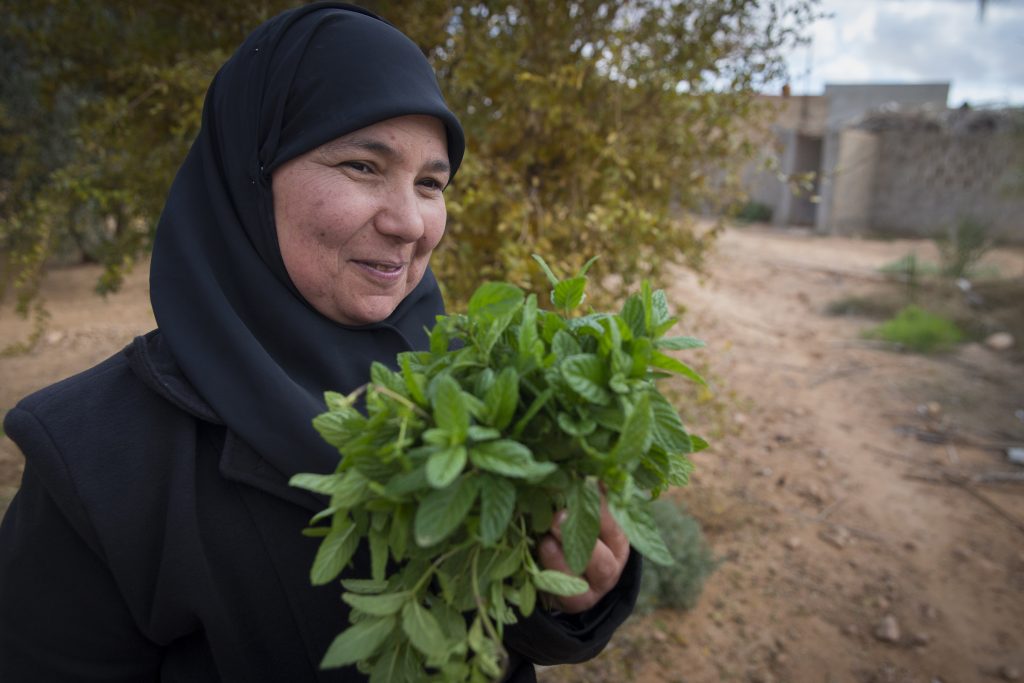
A key overall take-away message from the expert panel is that supportive policies alone are not enough. Rather, in order to tackle the institutionalization of harmful gender norms and stimulate actual change in practice at all levels, policy interventions need to go hand in hand with strong consciousness-raising, critical reflection and behavior change initiatives.
Read the full report:
Women’s access to market opportunities in South Asia and the Middle East & North Africa: barriers, opportunities and policy challenges
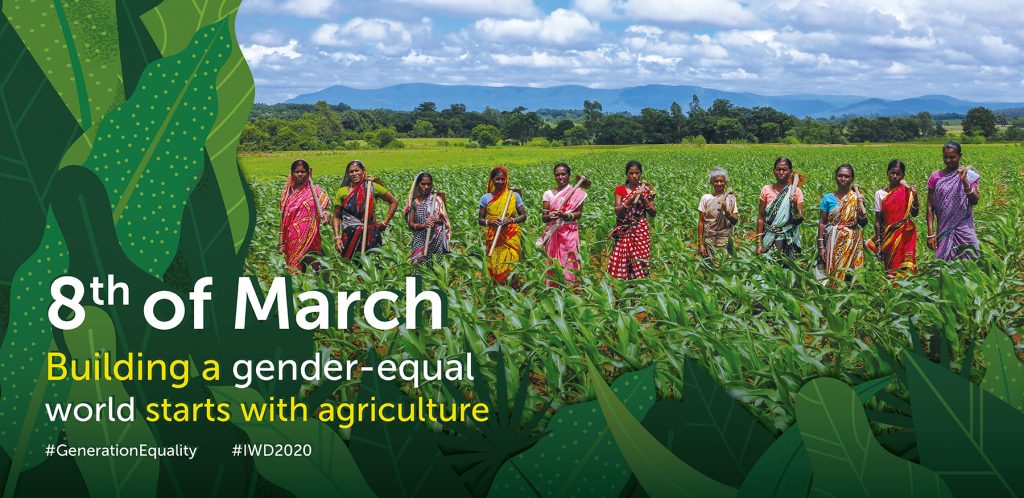
Scaling to new heights in agriculture
How to scale? This question frequently comes up as projects look to expand and replicate results. In order to sustain enduring impacts for projects after their lifetime, agricultural programs are turning to scaling strategies. These strategies look beyond the numbers that are reached within a project and include sustainability and transformation beyond the project context. Methods and tools exist that help anticipate realistic and responsible scaling pathways.
The Scaling team at the International Maize and Wheat Improvement Center (CIMMYT), led by Lennart Woltering, drives the initiative to incorporate scaling principles into existing and developing projects to maximize impact.
Maria Boa recently joined the team as Scaling Coordinator. Last year Boa and Woltering participated in regional meetings on scaling in Morocco, Tunisia and Vietnam, which highlighted the need for better dissemination of information on how to approach scaling, in addition to its benefits.

According to Boa, one of the key messages highlighted throughout these events was that in order for scaling to take hold and be integrated into projects, “…there needs to be a shift in mindset to accept that change is complex and that most projects only address a fraction of the problem.” This is essential in using scaling to effectively support long-term results.
At a workshop in Tunisia organized by ICARDA, IFAD and CIMMYT in November 2018, many participants expressed interest in scaling strategy tools, but were puzzled on how to integrate them into their specific projects. Many determined that they were stuck developing scaling strategies in an outdated framework, or one that strictly focused on using technological innovations. One participant admitted that she was skeptical of scaling perspectives because many did not lie in her field of expertise.
The November 2018 CCAFS SEA Conference on Scaling in Vietnam provided a platform for the sharing and learning of experiences in the scaling world. Some of the key messages from the event included the importance of scaling agricultural innovations taking place in complex systems of agricultural transformation, and the necessity of joint cooperation from all involved stakeholders and their openness to taking on challenges as a way to support sustainable system change.
According to Boa, scaling is a process that heavily relies on strategic collaboration for lasting impact. “Projects often don’t take into account how they’re a part of a larger chain of potential change,” she says.
Already recognized as a sustainable leader within scaling, CIMMYT is looking to strengthen scaling efforts in order to foster a more enduring impact within CIMMYT projects and beyond.

Currently, the Scaling team at CIMMYT is conducting research on the “science of scaling” as it continues to function as a “help desk,” providing support integrating scaling principles in proposals and projects. Its primary role is to consider a project’s scaling needs and guide the development of an informed strategy to leverage efforts and resources. Boa hopes that by integrating responsible scaling approaches early on, projects can better balance the trade-offs associated with change.
Success in scaling is measured by a project’s enduring impact. However, stakeholders need more experience and capacity to see programs through to their end and be willing to monitor them beyond that lifespan. CIMMYT is developing and collecting the tools to support stakeholders with these specific capacities.
Developing a scaling strategy can also bring additional benefits: a discussion about scaling opens the door for raising awareness and fostering actions among different stakeholders towards system change and sustainable impact.
Delegates gather in Morocco to combat nematodes in agriculture
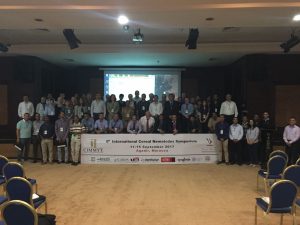
AGADIR, Morocco (CIMMYT) – Eighty delegates from across the globe recently gathered at the 6th International Cereal Nematode Symposium in Agadir, Morocco to discuss the spread of nematodes, what strategies can be used to lessen their impact on crops and boost international collaboration on research.
Plant–parasitic nematodes pose an enormous threat to global food security, destroying about 15 percent of global food production annually, a loss of more than $157 billion worldwide.
“Nematodes are the unseen enemy of our crops,” said Ricard Sikora, a professor at the University of Bonn in Germany who spoke at the symposium. “[They] attack the root of the crop…they are little worms that most people don’t even know exist, but they are having a devastating effect on our ability to feed ourselves properly now and in the future.”
During the opening speech of the symposium, which was held from September 11-16, the Director of Morocco’s National Institute for Agricultural Research’s (INRA) regional center in Agadir Abdelaziz Mimouni gave a general presentation about the different centers of INRA-Morocco as well as its research programs on cereals.
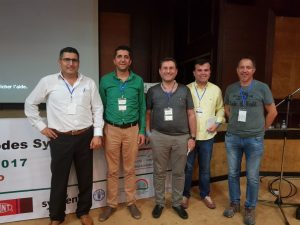
Fatih Ozdemir, director of the Bahri Dağdaş International Agricultural Research Institute and coordinator for the International Winter Wheat Improvement Program in Turkey, spoke about the importance of the soil borne diseases in Turkey and the region. Tadesse Wuletaw, wheat breeder at the International Center for Agricultural Research in Dry Areas (ICARDA), welcomed participants and spoke about the role of breeding programs to control diseases.
“We have so many common problems in each of our nations,” said Richard Smiley, a professor from Oregon State University who presented on cereal nematodes in the Pacific Northwest. “Our goal is to understand and describe the biology of those nematodes, but also to determine how they can best be managed economically by our farmers.”
Abdelfattah Dababat, leader of the International Maize and Wheat Improvement Center’s (CIMMYT) Soil Borne Pathogens Program, thanked CIMMYT and donors for supporting the Symposium as well as INRA for hosting this symposium. The conference was coordinated and organized by Dababat as part of the ICARDA-CIMMYT Wheat Improvement Program (ICWIP), and funded by CIMMYT, INRA, DuPont, Bisab, Labomine, Agrifuture, GRDC and Syngenta.
The 7th International Cereal Nematode Symposium will be held in India in 2019. For more information, please contact Abdelfattah A. Dababat at a.dababat@cgiar.org or the local organizer for the 7th Symposium in India Umarao at umanema@gmail.com.
Watch a video summary of the 6th International Cereal Nematode Symposium in Agadir, Morocco below:

